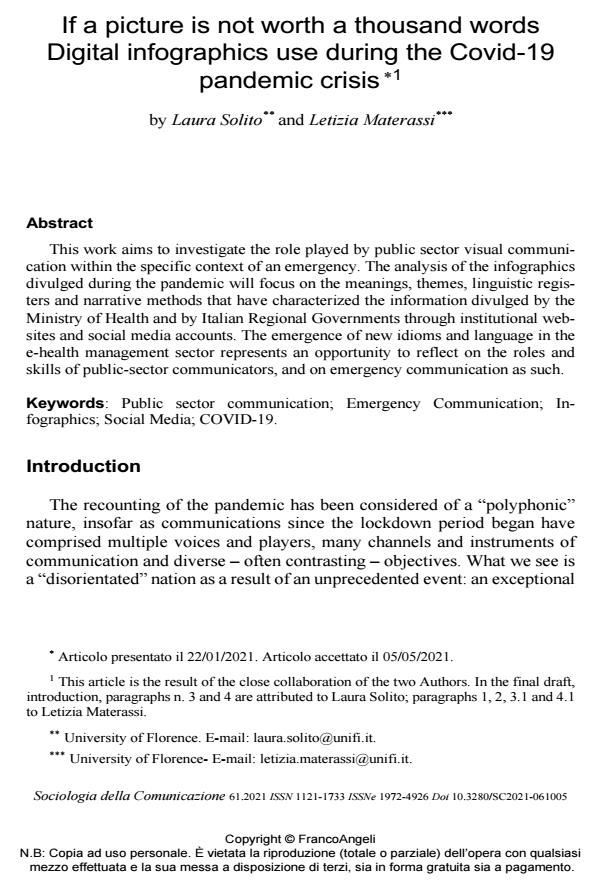If a picture is not worth a thousand words. Digital infographics use during the Covid-19 pandemic crisis
Titolo Rivista SOCIOLOGIA DELLA COMUNICAZIONE
Autori/Curatori Laura Solito, Letizia Materassi
Anno di pubblicazione 2021 Fascicolo 2021/61
Lingua Inglese Numero pagine 19 P. 52-70 Dimensione file 535 KB
DOI 10.3280/SC2021-061005
Il DOI è il codice a barre della proprietà intellettuale: per saperne di più
clicca qui
Qui sotto puoi vedere in anteprima la prima pagina di questo articolo.
Se questo articolo ti interessa, lo puoi acquistare (e scaricare in formato pdf) seguendo le facili indicazioni per acquistare il download credit. Acquista Download Credits per scaricare questo Articolo in formato PDF

FrancoAngeli è membro della Publishers International Linking Association, Inc (PILA)associazione indipendente e non profit per facilitare (attraverso i servizi tecnologici implementati da CrossRef.org) l’accesso degli studiosi ai contenuti digitali nelle pubblicazioni professionali e scientifiche
This work aims to investigate the role played by public sector visual communi-cation within the specific context of an emergency. The analysis of the in-fographics divulged during the pandemic will focus on the meanings, themes, lin-guistic registers and narrative methods that have characterized the infor-mation divulged by the Ministry of Health and by Italian Regional Governments through institutional websites and social media accounts. The emergence of new idioms and language in the e-health management sector represents an opportunity to reflect on the roles and skills of public-sector communicators, and on emergen-cy communication as such.
Parole chiave:Public sector communication; Emergency Communication; In-fographics; Social Media; COVID-19.
- Towards a conversational public administration? Giulia Banfi, Marco Luca Pedroni, in RDBCI: Revista Digital de Biblioteconomia e Ciência da Informação /2025 pp.e026005
DOI: 10.20396/rdbci.v24i00.8680284
Laura Solito, Letizia Materassi, If a picture is not worth a thousand words. Digital infographics use during the Covid-19 pandemic crisis in "SOCIOLOGIA DELLA COMUNICAZIONE " 61/2021, pp 52-70, DOI: 10.3280/SC2021-061005